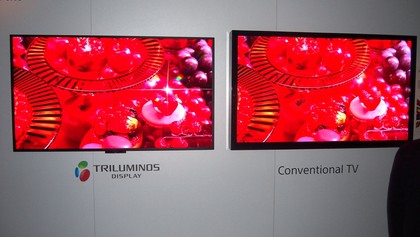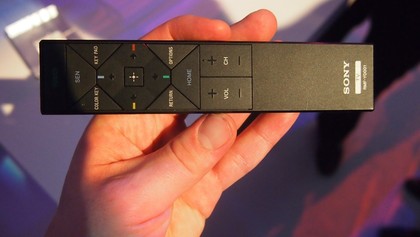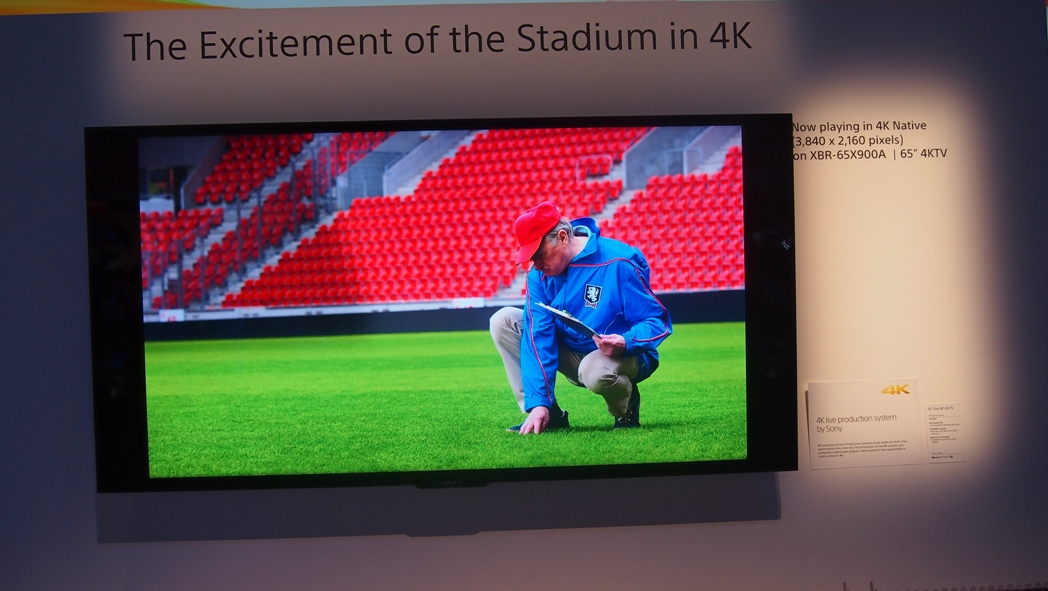Early Verdict
Pros
- +
Stunning 4K images
- +
Triluminous layer boost colour
- +
Accessible 4K
Cons
- -
Motion issues
- -
It's going to be pricey
Why you can trust TechRadar
There's absolutely no doubt that the televisual theme of CES 2013 is Ultra HD, or 4K if you prefer. Previous years have been totally dominated by 3D, but this year it's all about squeezing more pixels into those panels, and Sony is pushing the benchmark envelope for the second year in a row.
Last year we saw the announcement and launch of two 84-inch Ultra HD TVs – one from Sony itself and one from LG. But who's got room for an 84-inch TV, and more pertinently, who has £25,000 to spend on one? Not us, that's for sure.
Step forward the Sony KD-55X9000A and the slightly bigger KD-65X9000A – the first 4K TVs we've seen at a manageable screen size and probably the first step in Ultra HD becoming a more widespread and accessible technology that even mortals can play with.

To say it looks fantastic is a high resolution understatement. Pixels have never been packed into a TV this tightly, so 4K pictures look utterly spellbinding. The samples at the show were displaying native 4K content including sports and movies and it all looked brilliant.
The TV includes Sony's brand new Triluminous panel tech which works in conjunction with the processor to increase the RGB colour range. It expands the colour pallette and brings the LED LCD picture much closer to that of OLED than ever before.
The TV was displayed next to an anonymous 2012 Sony TV (we're 99% sure it wasn't the super-duper HX853 though) and the difference was clear. Reds in particular popped off the surface of the screen with extreme, vivid potency.
All this wizardry is powered along by Sony's bespoke and super-awesome 4K X-Reality Pro chip which is also able to upscale 1080p images to the panel's native resolution of 3840 x 2160.
It wasn't all smooth sailing though. Like the 84-incher we reviewed last year, the 55X9000A was clearly suffering from moderate motion issues. Fast-moving objects and quick pans showcased these struggles most clearly, but as we were unable to have a look at the TV's settings, it's unclear whether this could be remedied with a bit of tinkering.
CES showrooms are monstrous, brightly-lit affairs and manufacturers tend to ramp up their brightness and contrast settings to compensate. This can affect motion performance so we'll let Sony off until we can have a closer look in our testing lab.

The TV will ship with one of the NFC-enabled RMF-YD01 remote controls which you can combine with your NFC-enabled mobile device to turn it into a multimedia remote control, courtesy of the new SideShow service. More on that soon.
Possibly the loveliest aspect of this set, though, was the 3D performance. We like to keep an open mind when it comes to 3D – we see both sides of the it's great/it's not argument – but 4K certainly does make 3D content look a lot more tolerable even for the most achey of eyes.
Because passive 3D glasses divide the light into two channels, it effectively halves the resolution of the perceived picture. But with the extra pixels provided by Ultra HD, passive 3D is suddenly displayed in Full HD, and it looks superb on the X9000A.
Sony is not currently implementing Active 3D tech with its 4K TVs – the processing power simply isn't available yet – but we were told by Sony technicians that Active 3D will make a comeback possibly as soon as next year. And you know what that means? Super-resolution Ultra HD 3D amazingness. Boom.
These TVs will be out Spring/Summer in the US and UK. Prices have not been revealed yet, but you can probably guess it's going to cost more than any other 65-inch TV currently available.
Early Verdict
A super TV that'll cost a lot, but will still be the cheapest Ultra HD TV yet.
James was part of the TechRadar editorial team for eight years up until 2015 and now works in a senior position for TR's parent company Future. An experienced Content Director with a demonstrated history of working in the media production industry. Skilled in Search Engine Optimization (SEO), E-commerce Optimization, Journalism, Digital Marketing, and Social Media. James can do it all.
What is a hands on review?
Hands on reviews' are a journalist's first impressions of a piece of kit based on spending some time with it. It may be just a few moments, or a few hours. The important thing is we have been able to play with it ourselves and can give you some sense of what it's like to use, even if it's only an embryonic view. For more information, see TechRadar's Reviews Guarantee.

